World 🢖 North America 🢖 United States 🢖 Arizona
Waterfalls 🢔 Geological wonders 🢔 Categories of wonders
Wonder
Navajo Falls (Lower Navajo Falls)
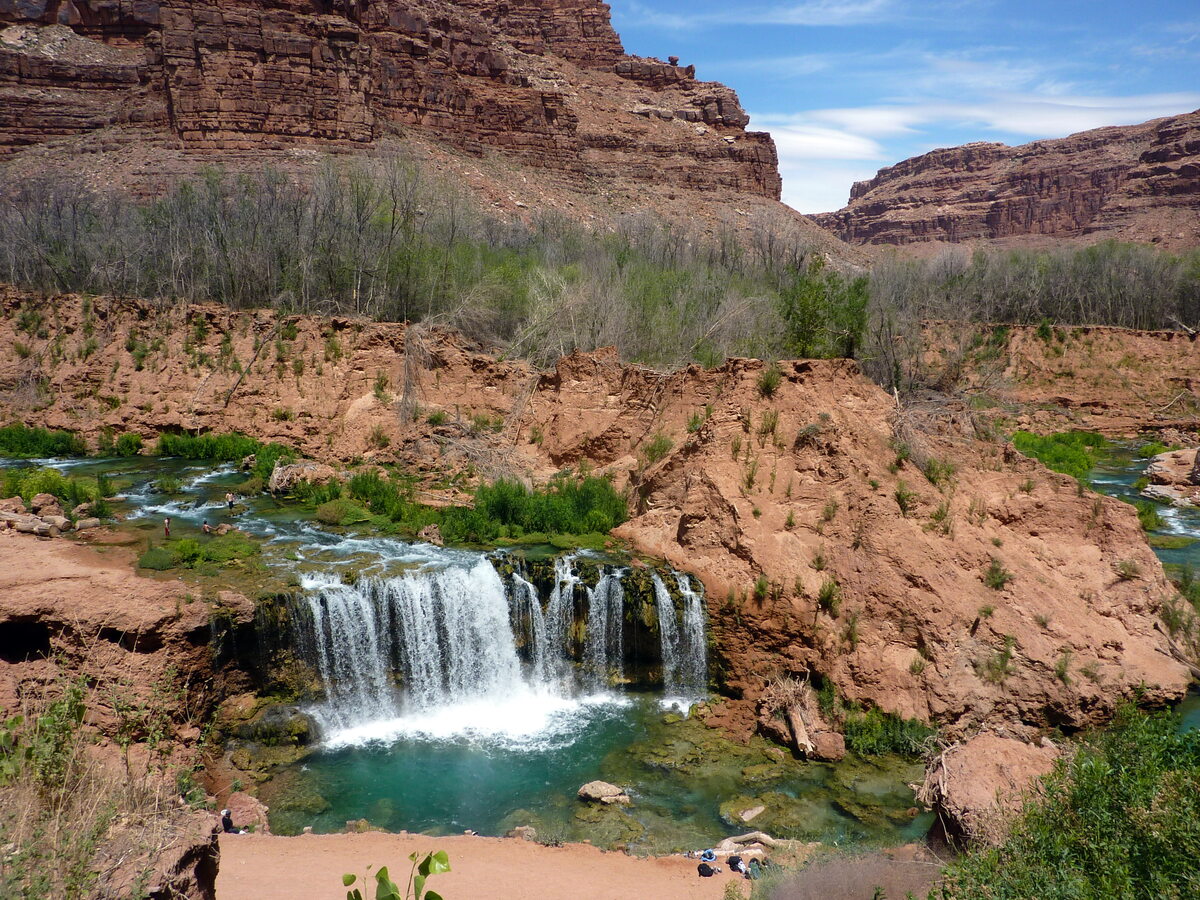
 In short
In short
After the flooding in 2008 on the site of a former waterfall formed two smaller waterfalls, including the beautiful Lower Navajo Falls (Rock Falls): a 9 m tall waterfall with a single plunge.
 36.3%
36.3%
GPS coordinates
Location, address
Map of the site
If you see this after your page is loaded completely, leafletJS files are missing.
 In detail
In detail
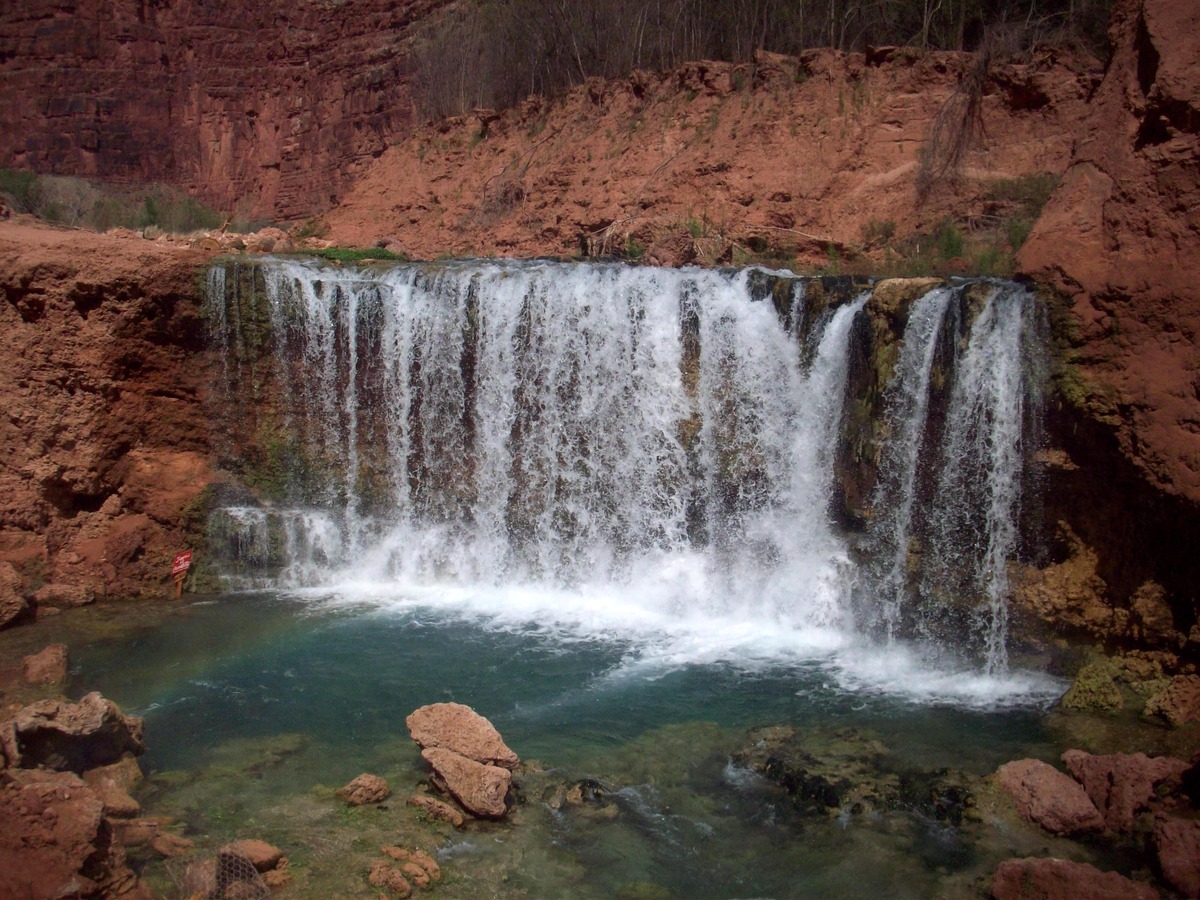
More detailed description of the geological history of waterfalls in Havasu Canyon is provided in the article about Havasu Falls.
Between Supai village and the Colorado River in Havasu Canyon are five-six larger waterfalls and countless smaller travertine terraces. The main waterfalls (starting from Supai) are:
- Fiftyfoot Falls
- Navajo Falls
- Havasu Falls
- Mooney Falls
- Beaver Falls
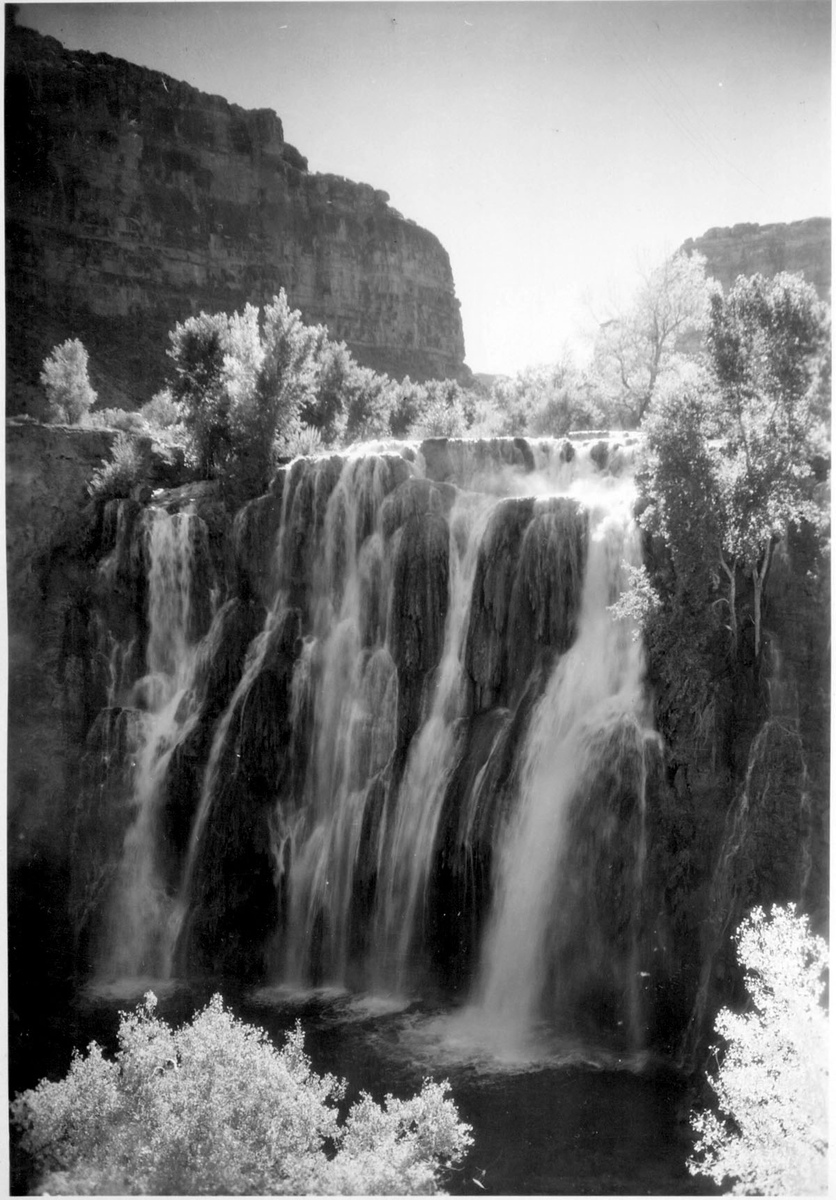
The current Lower Navajo Falls (as well as the nearby, smaller Upper Navajo Falls or New Navajo Falls) formed after the massive floods on August 16-17, 2008. For several hours the amount of water in Havasu Creek increased almost 100 times (1) and the extreme power of the water partly washed out the earlier travertine formations of the previous Navajo Fall. The mudflow blocked the former route of the stream and a new waterfall formed in a new location.
The earlier Navajo Falls was some 18-20 m high. The previous waterfall was not a permanent feature either: before the floods in August 1955, this waterfall was 23 m high. The site of the former Navajo Falls now is dry, with its travertine formations still seen.
Surprisingly fast the stream formed new travertine terraces above and below the falls and, even if the landscape has changed, the waterfalls of emerald-colored Havasu Creek are as beautiful as ever.
Behind the curtain of falling water is a small cave.
People may like to jump in the deep pool below the falls but this is a disrespectful action to the local people and, also quite dangerous due to the constantly changing locations of sharp stones.
References
- 2008 flood alters landscape of famed Grand Canyon site, ABC News, August 17, 2009. Accessed on January 4, 2023.
- Theodore S. Melis, William M. Phillips, Robert H. Webb, and Donald J. Bills. When the Blue-Green Waters Turn Red. Historical Flooding in Havasu Creek, Arizona, U.S. GEOLOGICAL SURVEY Water-Resources Investigations Report 96—4059. 1996. Accessed on January 4, 2023.
 Linked articles
Linked articles
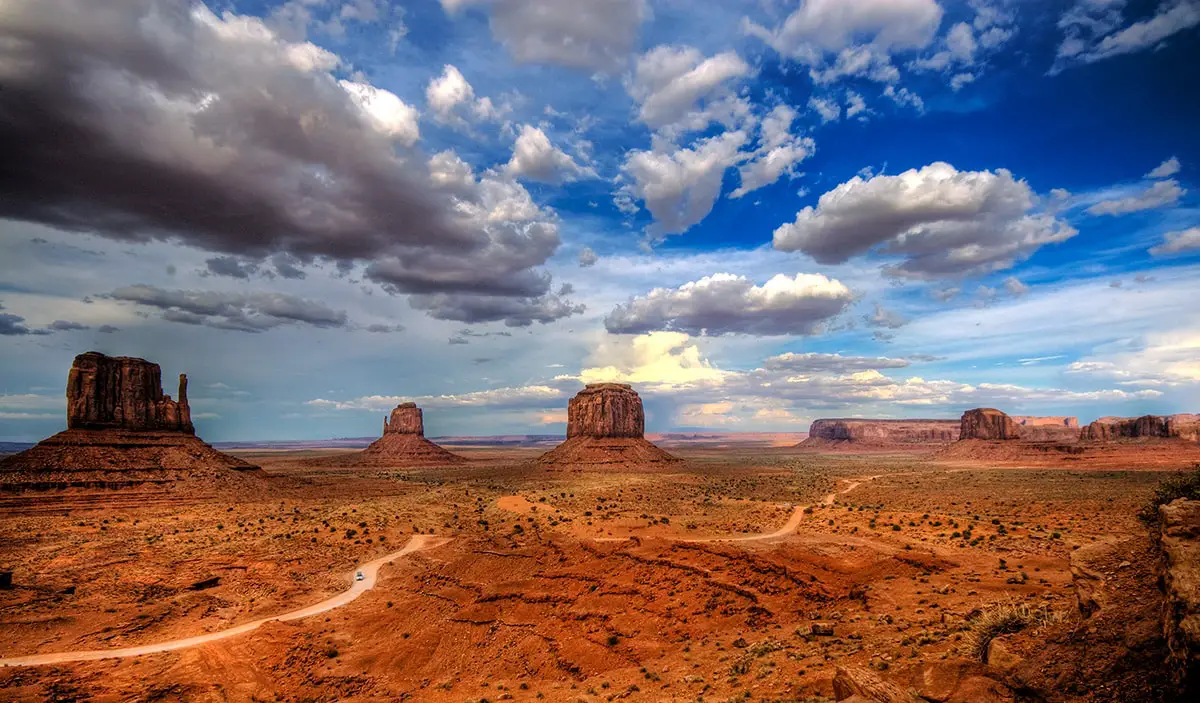
Wonders of Arizona
Some of the world’s most impressive sights are located in Arizona. This American state has such landmarks of world fame as Grand Canyon and Monument Valley.
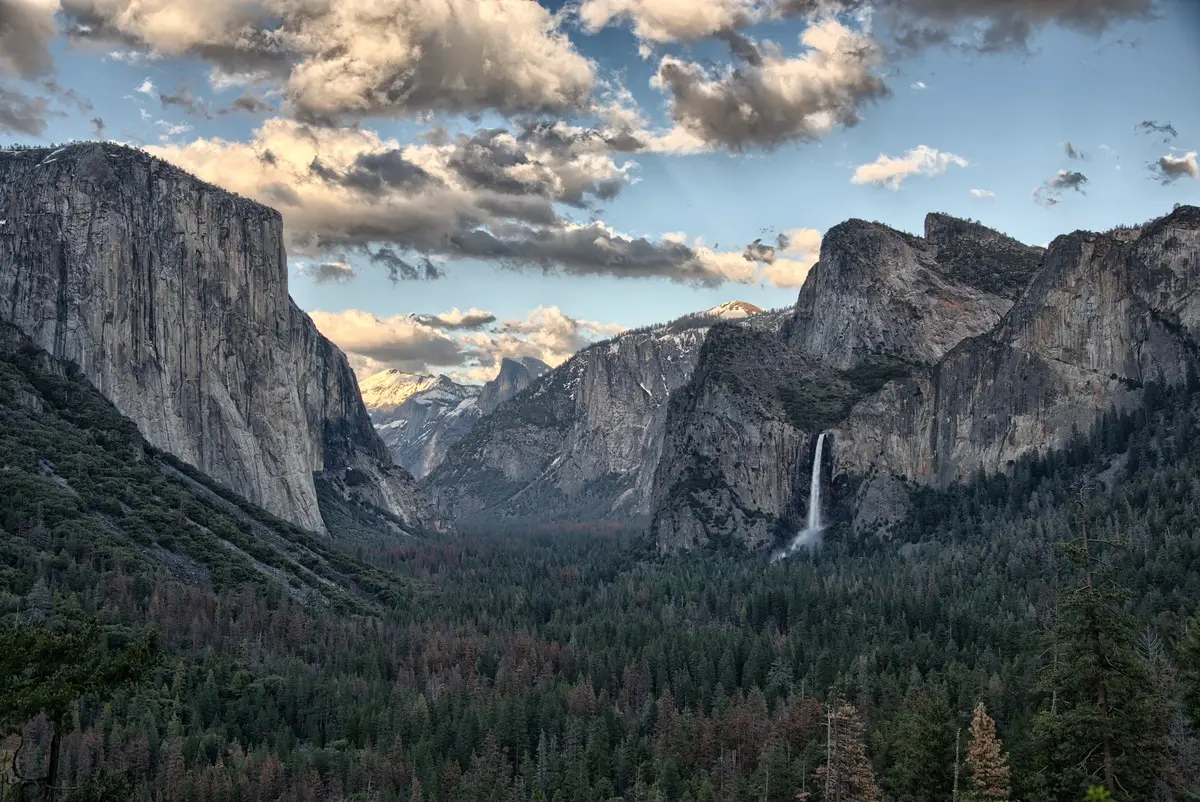
Wonders of the United States
The United States of America is one of the largest countries in the world and offers a wide array of diverse attractions: many are unsurpassed in the world. Highlights of the United States are cliffs, canyons, and rock formations, several impressive downtowns of cities with numerous skyscrapers as well as a rich array of geothermal features, and the giant forest of California.
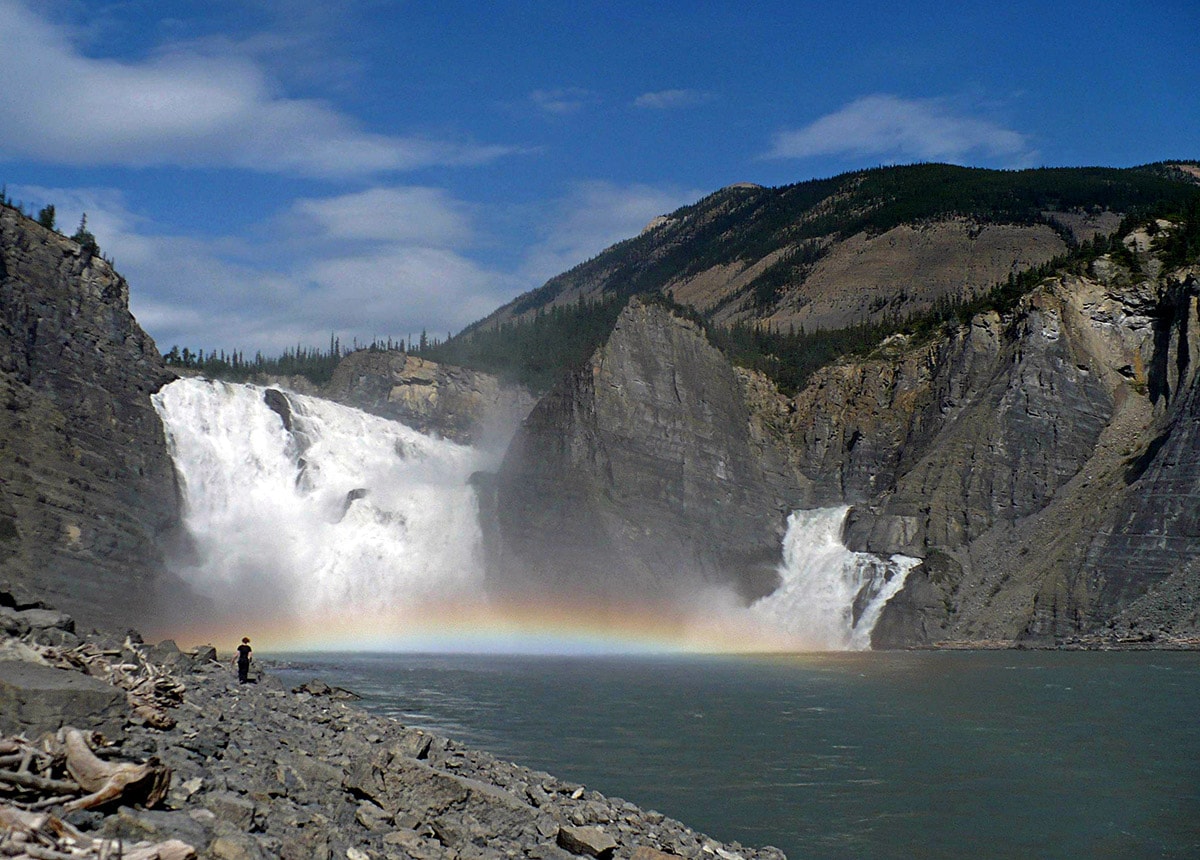
Waterfalls
Some of the most fascinating and awe-inspiring natural monuments are waterfalls or locations where a river abruptly changes its elevation.
 Recommended books
Recommended books
Arizona State Parks: A Guide to Amazing Places in the Grand Canyon State
Home to one of the Seven Natural Wonders of the World, Arizona is a beacon for outdoor enthusiasts–the desert landscape is brimming with opportunities for exploration and adventure. In this guide we join travel writer Roger Naylor as he takes us through the state parks of this amazing region. The parks featured throughout this book offer some of the best hiking, camping, fishing, boating, stargazing, and wildlife watching in the state.
Exploring Havasupai: A Guide to the Heart of the Grand Canyon
Deep in the Grand Canyon lies a place of unmatched beauty―a place where blue-green water cascades over fern-clad cliffs into travertine pools, where great blue heron skim canyon streams, and where giant cottonwoods and graceful willows thrive in the shade of majestic sandstone cliffs. Havasupai is a paradise enveloped in one of the earth’s most rugged and parched landscapes.


